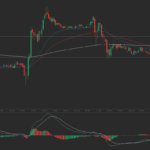Yesterday’s trade saw AUD/USD within the range of 0.6933-0.7050. The pair closed at 0.6935, plummeting 0.72% on a daily basis. It has been the 9th drop in the past 10 trading days and also a second consecutive one. The daily low has been a lower-low test of the low from January 12th.
At 10:27 GMT today AUD/USD was losing 0.46% for the day to trade at 0.6925. The pair touched a daily low at 0.6910 at 9:05 GMT, overshooting the daily S2 level, and a daily high at 0.6974 during late Asian trading session. The daily low has been the lowest level since September 7th, when a low of 0.6893 was reached. Support may be received within the 0.6900-0.6915 area and then – at the low from September 7th 2015. Resistance, on the other hand, may be encountered at the hourly 21-period EMA (0.6955), then – at the current daily high/hourly 55-period EMA (0.6974) and finally – at the hourly 100-period EMA (0.6996).
On Thursday AUD/USD trading may be influenced by the following macroeconomic reports as listed below.
Fundamentals
United States
Import and Export prices
Prices of imported goods in the United States probably fell for a seventh consecutive month in December, going down at a monthly rate of 1.4%, according to market expectations. In November import prices were 0.4% lower from a month ago, driven by a 2.5% decline in fuel import prices and a 0.2% dip in non-fuel prices. In annual terms, prices were 9.4% lower in November, which has been the 16th consecutive month of decline. Generally, lower import prices of goods suggest lower rates of consumer inflation.
Prices of exported goods from the United States probably decreased for a seventh consecutive month in December, falling at a monthly rate of 0.5%. In November export prices were 0.6% lower from a month ago, as agricultural export prices fell 1.1%, while prices of non-agricultural goods dropped 0.3%. In annual terms, export prices slumped 6.3% in November, or for a 15th month in a row. Lower prices of exported goods generally bolster demand abroad, and as US trade accounts for 20% of international trade relations, this also tends to be dollar positive.
The Department of Labor is expected to release the official numbers at 13:30 GMT.
Initial, Continuing Jobless Claims
The number of people in the United States, who filed for unemployment assistance for the first time during the business week ended on January 8th, probably increased to 275 000, according to market expectations, from 277 000 reported in the preceding week. If expectations were met, this would be the lowest number of claims since the business week ended on December 18th, when a figure of 267 000 was reported.
The 4-week moving average, an indicator lacking seasonal effects, was 275 750, marking a decrease by 1 250 compared to the preceding weeks unrevised average.
The business week, which ended on January 1st has been the 43rd consecutive week, when jobless claims stood below the 300 000 threshold, which implied a healthy labor market.
Initial jobless claims number is a short-term indicator, reflecting lay-offs in the country. In case the number of claims met expectations or decreased further, this would have a moderate bullish effect on the US dollar.
The number of continuing jobless claims probably fell to the seasonally adjusted 2 215 000 during the business week ended on January 1st from 2 230 000 in the preceding week. The latter represented an increase by 25 000 compared to the revised up number of claims reported in the week ended on December 18th. This indicator reflects the actual number of people unemployed and currently receiving unemployment benefits, who filed for unemployment assistance at least two weeks ago.
The Department of Labor is to release the weekly report at 13:30 GMT.
Australian unemployment stable in December
According to the monthly report by the Australian Bureau of Statistics, released earlier on Thursday, the seasonally adjusted rate of unemployment in the country remained steady at 5.8% in December, missing market expectations of an increase to 5.9%. It has been the lowest rate since April 2014, when unemployment was registered at 5.8% as well. The number of people in employment dropped by 1 000 to reach 11 902 300 in December from a month ago. Month-over-month, the number of persons in full-time employment went up by 17 600 to reach 8 228 700 in December, while part-time employment dropped by 18 500 to 3 673 600.
The number of people looking for employment shrank by 10 900 to reach 727 500 in December. Those looking for full-time employment were 2 600 fewer during the month to reach 515 000, while persons looking for part-time work were 8 400 fewer to reach 212 500. Compared to December 2014, the number of the unemployed persons shrank 3.6%, while the number of the employed increased 2.6%. The Aussie received support on the back of this upbeat report, but gains against the greenback were neutralized during European trade.
Bond Yield Spread
The yield on Australian 2-year government bonds went as high as 2.038% on January 13th, or the highest level since January 4th (2.046%), after which it closed at 2.025% to add 1.3 basis points (0.013 percentage point) compared to January 12th. It has been a third consecutive trading day of yield gains.
The yield on US 2-year government bonds climbed as high as 0.956% on January 13th, after which it closed at 0.903% to lose 2.5 basis points (0.025 percentage point) compared to January 12th. It has been the 13th drop in the past 21 trading days and also a second consecutive one.
The spread between 2-year Australian and 2-year US bond yields, which reflects the flow of funds in a short term, widened to 1.122% on January 13th from 1.084% on January 12th. The January 13th yield spread has been the largest one since December 11th.
Meanwhile, the yield on Australian 10-year government bonds soared as high as 2.802% on January 13th, after which it slid to 2.791% at the close to lose 0.006 percentage point compared to January 12th. It has been the first drop in the past three trading days.
The yield on US 10-year government bonds climbed as high as 2.151% on January 13th, after which it slipped to 2.079% at the close to lose 2.6 basis points (0.026 percentage point) compared to January 12th. It has been the 14th drop in the past 21 trading days and also a second consecutive one.
The spread between 10-year Australian and 10-year US bond yields widened to 0.712% on January 13th from 0.692% on January 12th. The January 13th yield difference has been the largest one since December 11th, when the spread was 0.727%.
Daily and Weekly Pivot Levels
By employing the Camarilla calculation method, the daily pivot levels for AUD/USD are presented as follows:
R1 – 0.6946
R2 – 0.6956
R3 (range resistance) – 0.6967
R4 (range breakout) – 0.7000
S1 – 0.6924
S2 – 0.6914
S3 (range support) – 0.6903
S4 (range breakout) – 0.6871
By using the traditional method of calculation, the weekly pivot levels for AUD/USD are presented as follows:
Central Pivot Point – 0.7068
R1 – 0.7187
R2 – 0.7421
R3 – 0.7540
S1 – 0.6834
S2 – 0.6715
S3 – 0.6481





